
All-around radio controlled model gliders (class F-3-B), which includes three flight exercises, is the youngest species of the competitions of flying models. It is flying on the duration, distance and speed. Place in the competition is determined by the sum of the results of the three exercises shown in the two flight rounds. In competition an athlete may use two models: allowed rearrangement of parts from one to another, however, the weight of the model and the maximum area of bearing surface shall not exceed respectively 5 kg and 150 DM
2, and the load on an area of 12 and 75 g/DM
2. The rules allow change of the geometry of surfaces in flight using radio control, but the transmission of information from the Board to the pilot is prohibited. The model was run for the guard rails, the movement of the Modeler’s assistant, engaged in towing, shall not exceed 150 m. a climb can be carried out with the help of the engine, for every 1 cm
3 working volume of which (but not more than 2 cm
3) shall be at least 100 g take-off weight of the model. It allowed the use of additional ballast. The engine operating time is limited to 45 C. To complete the exercise on the duration of the flight, the Modeler is given 8 min of working time at the start. The countdown of flight begins with the uncoupling of a rail (or stop the engine of a motor-glider). Every second in the air is estimated at one point. The maximum number is 360. For a flight over 6 min, the Modeler receives one penalty point for each extra second in the air (down to zero).
 Not so long ago in the journal “modelist-Konstruktor” was about the simplest model of a glider made from a conventional packaging corrugated Board material although not aeromodelling, but it is durable, tough and light. By the way, a square meter of corrugated Board with a thickness of 3 mm has a weight of only 400 g, respectively, the density of this material is only 0.13 g/cm3! Experiments have shown that the durable and lightweight corrugated cardboard is well suited for creating flying models. Needed only in the cutting and processing of corrugated Board to consider some of its features and to use a knife-cutter, literally honed to razor sharpness, otherwise cut lines get ragged.
Not so long ago in the journal “modelist-Konstruktor” was about the simplest model of a glider made from a conventional packaging corrugated Board material although not aeromodelling, but it is durable, tough and light. By the way, a square meter of corrugated Board with a thickness of 3 mm has a weight of only 400 g, respectively, the density of this material is only 0.13 g/cm3! Experiments have shown that the durable and lightweight corrugated cardboard is well suited for creating flying models. Needed only in the cutting and processing of corrugated Board to consider some of its features and to use a knife-cutter, literally honed to razor sharpness, otherwise cut lines get ragged. Not so long ago in the journal “modelist-Konstruktor” was about the simplest model of a glider made from a conventional packaging corrugated Board material although not aeromodelling, but it is durable, tough and light. By the way, a square meter of corrugated Board with a thickness of 3 mm has a weight of only 400 g, respectively, the density of this material is only 0.13 g/cm3! Experiments have shown that the durable and lightweight corrugated cardboard is well suited for creating flying models. Needed only in the cutting and processing of corrugated Board to consider some of its features and to use a knife-cutter, literally honed to razor sharpness, otherwise cut lines get ragged.
Not so long ago in the journal “modelist-Konstruktor” was about the simplest model of a glider made from a conventional packaging corrugated Board material although not aeromodelling, but it is durable, tough and light. By the way, a square meter of corrugated Board with a thickness of 3 mm has a weight of only 400 g, respectively, the density of this material is only 0.13 g/cm3! Experiments have shown that the durable and lightweight corrugated cardboard is well suited for creating flying models. Needed only in the cutting and processing of corrugated Board to consider some of its features and to use a knife-cutter, literally honed to razor sharpness, otherwise cut lines get ragged.
 All-around radio controlled model gliders (class F-3-B), which includes three flight exercises, is the youngest species of the competitions of flying models. It is flying on the duration, distance and speed. Place in the competition is determined by the sum of the results of the three exercises shown in the two flight rounds. In competition an athlete may use two models: allowed rearrangement of parts from one to another, however, the weight of the model and the maximum area of bearing surface shall not exceed respectively 5 kg and 150 DM2, and the load on an area of 12 and 75 g/DM2. The rules allow change of the geometry of surfaces in flight using radio control, but the transmission of information from the Board to the pilot is prohibited. The model was run for the guard rails, the movement of the Modeler’s assistant, engaged in towing, shall not exceed 150 m. a climb can be carried out with the help of the engine, for every 1 cm3 working volume of which (but not more than 2 cm3) shall be at least 100 g take-off weight of the model. It allowed the use of additional ballast. The engine operating time is limited to 45 C. To complete the exercise on the duration of the flight, the Modeler is given 8 min of working time at the start. The countdown of flight begins with the uncoupling of a rail (or stop the engine of a motor-glider). Every second in the air is estimated at one point. The maximum number is 360. For a flight over 6 min, the Modeler receives one penalty point for each extra second in the air (down to zero).
All-around radio controlled model gliders (class F-3-B), which includes three flight exercises, is the youngest species of the competitions of flying models. It is flying on the duration, distance and speed. Place in the competition is determined by the sum of the results of the three exercises shown in the two flight rounds. In competition an athlete may use two models: allowed rearrangement of parts from one to another, however, the weight of the model and the maximum area of bearing surface shall not exceed respectively 5 kg and 150 DM2, and the load on an area of 12 and 75 g/DM2. The rules allow change of the geometry of surfaces in flight using radio control, but the transmission of information from the Board to the pilot is prohibited. The model was run for the guard rails, the movement of the Modeler’s assistant, engaged in towing, shall not exceed 150 m. a climb can be carried out with the help of the engine, for every 1 cm3 working volume of which (but not more than 2 cm3) shall be at least 100 g take-off weight of the model. It allowed the use of additional ballast. The engine operating time is limited to 45 C. To complete the exercise on the duration of the flight, the Modeler is given 8 min of working time at the start. The countdown of flight begins with the uncoupling of a rail (or stop the engine of a motor-glider). Every second in the air is estimated at one point. The maximum number is 360. For a flight over 6 min, the Modeler receives one penalty point for each extra second in the air (down to zero).
 Model missiles Ѕ3А Cup winner S. P. Korolev 2008 Igor Danilov made by well-known scheme called “Chelyabinsk”. Its main feature, distinguishing feature is elongated up to 165 mm tail section. This helped a little to alleviate (about 0.5 g) stern, to shift the center of gravity of the model up.
Model missiles Ѕ3А Cup winner S. P. Korolev 2008 Igor Danilov made by well-known scheme called “Chelyabinsk”. Its main feature, distinguishing feature is elongated up to 165 mm tail section. This helped a little to alleviate (about 0.5 g) stern, to shift the center of gravity of the model up.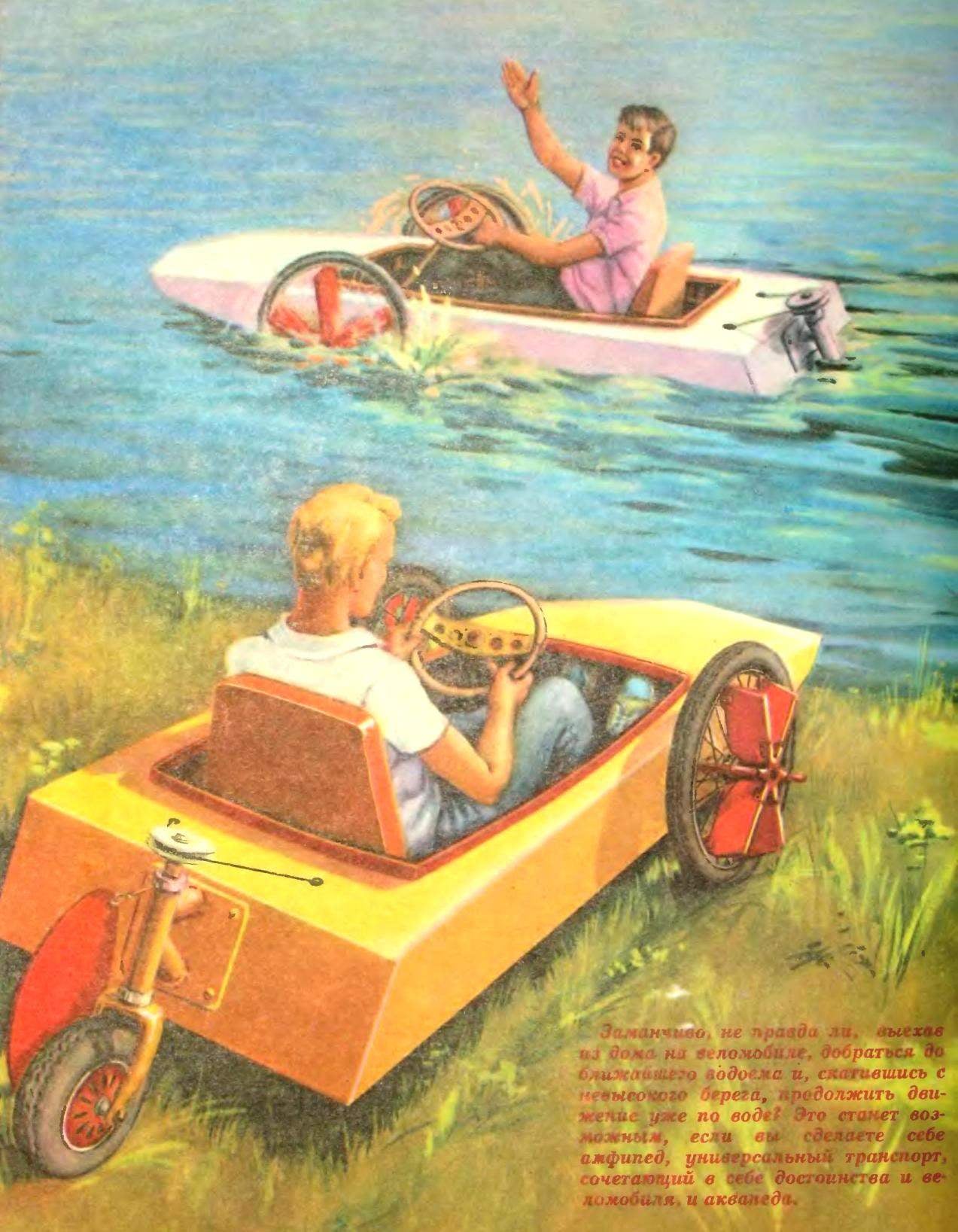
 Diverse and numerous family water bikes, but they all have a major flaw: transport them by land very difficult. Another thing — ampipe, on land he feels as confident as on the water. The secret to this versatility in the propeller — crankshaft with propeller wheels when traveling on the roads is the leading “front axle”.
Diverse and numerous family water bikes, but they all have a major flaw: transport them by land very difficult. Another thing — ampipe, on land he feels as confident as on the water. The secret to this versatility in the propeller — crankshaft with propeller wheels when traveling on the roads is the leading “front axle”.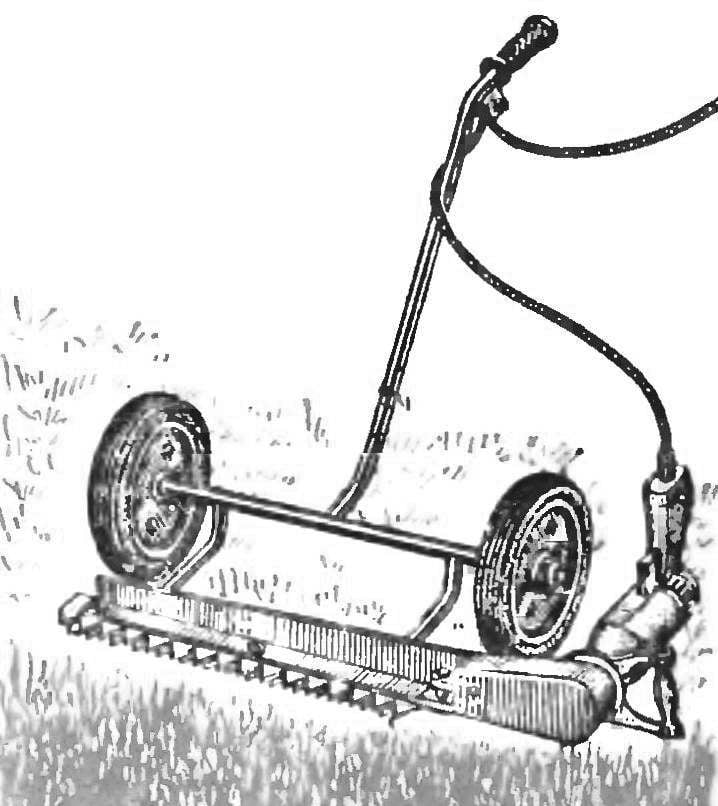
 Drill — an excellent universal drive for a variety of devices. In our magazine we published the suggestions of readers on how to expand the scope of this tool. Today we will talk about lawn mower, driven by the same drill.
Drill — an excellent universal drive for a variety of devices. In our magazine we published the suggestions of readers on how to expand the scope of this tool. Today we will talk about lawn mower, driven by the same drill.
 If you live not too far from the pond, make our drawings Dinghy, and you will experience all the delights of sailing. But if this ancient engine is not too attract you, the body of the Dinghy can be used as the basis for small motor boats or rowing Dinghy. Materials for it will require only two sheets of plywood and pine slats.
If you live not too far from the pond, make our drawings Dinghy, and you will experience all the delights of sailing. But if this ancient engine is not too attract you, the body of the Dinghy can be used as the basis for small motor boats or rowing Dinghy. Materials for it will require only two sheets of plywood and pine slats.
 Light truck, which I did for a holiday farm called “Edelweiss”, is difficult to attribute definitely to any type of vehicles. He rigidly jointed (of two parts) frame. On the front of the assembled engine from scooter “Tourist”, and in the back — a homemade body.
Light truck, which I did for a holiday farm called “Edelweiss”, is difficult to attribute definitely to any type of vehicles. He rigidly jointed (of two parts) frame. On the front of the assembled engine from scooter “Tourist”, and in the back — a homemade body.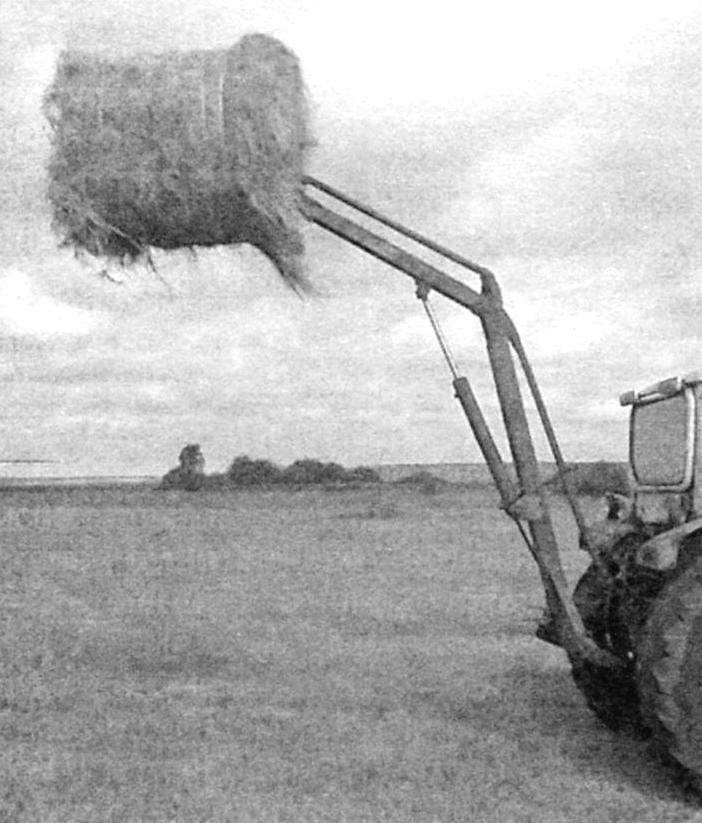
 With the growth of livestock per farm farms there was a need of increasing the food supply. Forage – a very laborious process, requiring great effort and fine days weather loosens it a little. Manually, the old fashioned way with a scythe and a rake, with this task to cope became more difficult. Meanwhile, in private households gradually began to appear on trucks, tractors. It took them various agricultural implements, trailers and ancillaries. In particular, hay began to use balers. Now hay pressed in rolls of approximately 200 – 300 kg. They have to be transported from the field to the storage place. But try to raise the weight and throw in the truck or even lift on the truck tractor! So I got the idea to make the so-called tractor lift coils – rear unit operating from the tractor.
With the growth of livestock per farm farms there was a need of increasing the food supply. Forage – a very laborious process, requiring great effort and fine days weather loosens it a little. Manually, the old fashioned way with a scythe and a rake, with this task to cope became more difficult. Meanwhile, in private households gradually began to appear on trucks, tractors. It took them various agricultural implements, trailers and ancillaries. In particular, hay began to use balers. Now hay pressed in rolls of approximately 200 – 300 kg. They have to be transported from the field to the storage place. But try to raise the weight and throw in the truck or even lift on the truck tractor! So I got the idea to make the so-called tractor lift coils – rear unit operating from the tractor.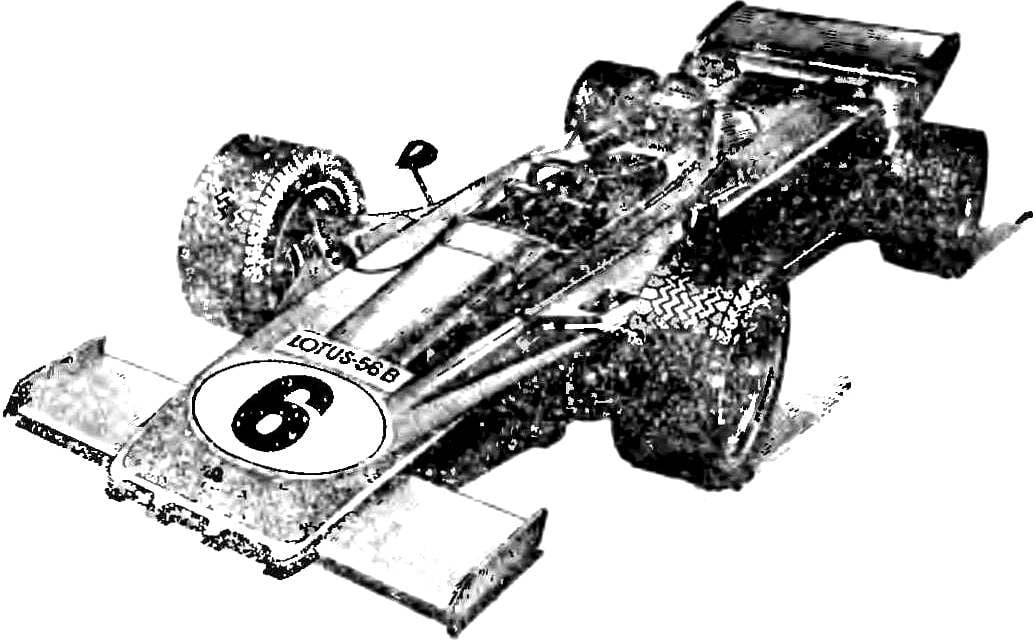
 Picking up the prototype for the model with open wheels (the trace of A class), we did not immediately notice the car “Lotus” with a modest architecture of the body and a relaxed silhouette — machine like a machine. But one of the guys asked “innocent” question — why would he ship the pipe? After looking at the car more closely, we realized that the prototype carries many more mysteries: where is this race car exhaust pipe, where futerko, inlet air into the cylinders of the engine, why so few intakes, why is the car the same front and rear wheels, etc.? They began to understand, and found that perceived at first as “the ugly duckling” “the Lotus-56V” can rightfully be considered a “Swan” of motor vehicles.
Picking up the prototype for the model with open wheels (the trace of A class), we did not immediately notice the car “Lotus” with a modest architecture of the body and a relaxed silhouette — machine like a machine. But one of the guys asked “innocent” question — why would he ship the pipe? After looking at the car more closely, we realized that the prototype carries many more mysteries: where is this race car exhaust pipe, where futerko, inlet air into the cylinders of the engine, why so few intakes, why is the car the same front and rear wheels, etc.? They began to understand, and found that perceived at first as “the ugly duckling” “the Lotus-56V” can rightfully be considered a “Swan” of motor vehicles.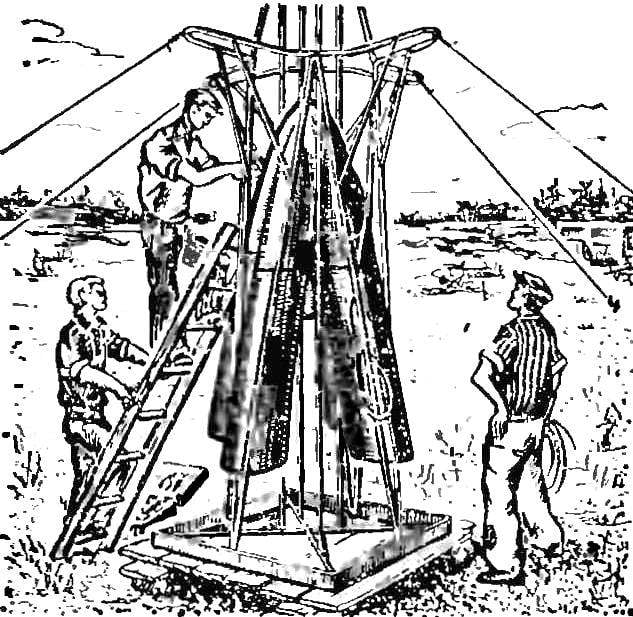
 Rocket “07” — the first rocket was working 2nd brigade Gird (Group of study of reactive motion), led by K. M. Tikhonravov.
Rocket “07” — the first rocket was working 2nd brigade Gird (Group of study of reactive motion), led by K. M. Tikhonravov.